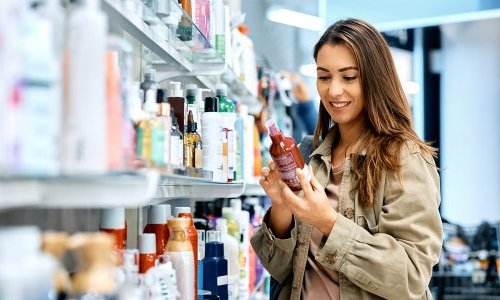
One of the biggest beauty markets in the world
In France, 2018 stands for “Japonism”. The two countries officially celebrate their diplomatic relations as well as a the commemoration of the Meiji era’s 150th birthday, an era often perceived in Japan’s history as the opening towards the West.
Beauty-wise, one of the big event in Paris was the Cosmetic 360° on October 17 & 18, with an entire corner dedicated to J-Beauty. Visitors could interact with brands such as Shiseido and agencies such as Cosmetics Inspiration & Creation.
Enjoying its rank as the world’s second beauty market, Japan firmly emerges as one of tomorrow’s most promising luxury markets, with annual Beauty expenditures estimated at USD 22 billion.
The land of the rising sun rises with resilience
"With brands like Sony, Panasonic or Toyota, Japan has always been a leader in innovation ", deciphers Leïla Rochet, founder of the Cosmetics Inspiration & Creation agency.
"Designers like Kenzo Takada, Issey Miyake, Kansai Yamamoto or Comme des Garçons literally built style in the 80’s. During a flourishing economical period called the Bubble Economy, all luxury brands were investigating Japan as a source of innovation. The culture there was also perceived as atypical and fascinating - which made it even more attractive. Today, we are witnessing a J-Style renaissance, especially in design, fashion and beauty. Japan’s DNA echoes with today’s consumers quest for purpose, naturalness, sophistication and modernity. Propelled by a strong creativity of Japanese designers and beauty brands, the J-Style is truly contemporary.”
J-Beauty, a label for excellence
Now called J-Beauty, 3.0 Japanese cosmetics have made their way in the market. Whether it’s native Japanese brands, Japanese-influenced brands or “Made in Japan” brands, the “J-label’, just like the French touch, is a highly attractive one - certifying both quality and technology.
American brand Tatcha, for instance, an indie skincare brand inspired by the Geisha of Japan, is one of the fastest growing skincare brands in the US. According to Tribedynamics, the brand is one of the most visible skincare brands on social media. In September 2018, Tatcha was at the top spot in EMV (Earned Media Value) in the US skincare category, +79 percent growth compared to 2017).
After having introduced its innovative skincare products to Millennials in 2017 with the Waso line, legacy J-brand Shiseido presented its new makeup line during the Cosmetic 360 event. Minimalistic and visionary, this new collection with a strong edge perfectly encapsulates J-Beauty’s new rise.
Lindsay Azpitarte, EMEA Regional Brand Vice President, deciphered the “J-Beauty signature” strategy by Shiseido, drawn for the brand’s very core, with 3 founding concepts:
– The “Wa”, harmony expressed through minimalistic boldness.
– The “Ma”, which means intuition - where what’s visible is as important as what’s invisible, explaining the high-tech ergonomics of the packs.
– The “Kensei”, or sensitivity, expressed through the extreme sensoriality of formulas and textures, and the highly artistic touch in the line’s communication.
Pure technology x sensoriality
The highly innovative and disruptive textures, as found in the sliding VisionAiry Gel Lipstick or the cloudy-like Minimalist Whipped Powder Blush, come in pared-down black packs with a simple red line. Claiming themselves as “the thinnest in the world”, this new Shiseido line definitely show J-Beauty’s pure technology mixed with sensoriality.
The technology of precision lies at the heart of Japanese skincare culture, as mentioned during the event’s roundtable.
“I was very moved by Jean Claude Le Joliff’s [founder of Inn2c] intervention” says Aida Lisea, technical expert at Cosmetics Inspiration & Creation. “Modern J-Beauty truly puts high technology and high quality above everything else. The frame of work is to extract millennial, traditional ingredients and infuse them with innovation. There’s this idea of continuously creating the same things, but in such a more modern and advanced way.”
When facing a “fun and disruptive” Korea, is J-Beauty choosing the high-end path? If things aren’t that simple, one can’t ignore the renewed excellence found in J-brands ingredients and textures.
Wellness, shittori and superfood
Worldwide, consumers are currently on a quest for alternative lifestyles, centered around wellness and healthy living, two concepts where Japan can easily claim to be expert.
After the wave of the Danish hygge, wabi-sabi or the art of "imperfection-perfection" aims for a simpler sophistication, where humility and contemplation are invitations to introspection. In Beauty, Wabi-sabi translates into minimalistic aesthetics, a search for singularity, and a certain “less is more” philosophy.
Obsessed with its Nature, Japan has become famous for its raw and powerful ingredients, used in day-to-day food and overall care. Authentic and rare, these ingredients target the young perfectly. The invasion of matcha tea and its Insta-worthy bright green is a good example.
Whether raw or fermented, J-brands extract or reinvent other noble items such as saké, miso, ginger, cotton silk or kombu leaves to create a fresh, indie, and superfood-infused skincare like Shiro, Three Cosmetics, Sekkisei or Tatcha.
Shittori is the new chok chok
Just like the Korean chok chok skin, the famous glass-like translucent complexion, the Japanese shittori skin has made its way on Millennials #skingoals. As complex as the word umami, shittori describes a light yet "sappari" texture, which means luscious and hydrated, as well as highly "uruoi", glowy and glossy.
The shittori aspect is mainly used in fooding, best describes the texture of the famous mochi cakes, for instance.
Japanese Supplier, Daito Kasei, explained during the conference on the future of J-Beauty, how they mainly work on formulations and concepts translating the sensorial and complex shittori effect.





















